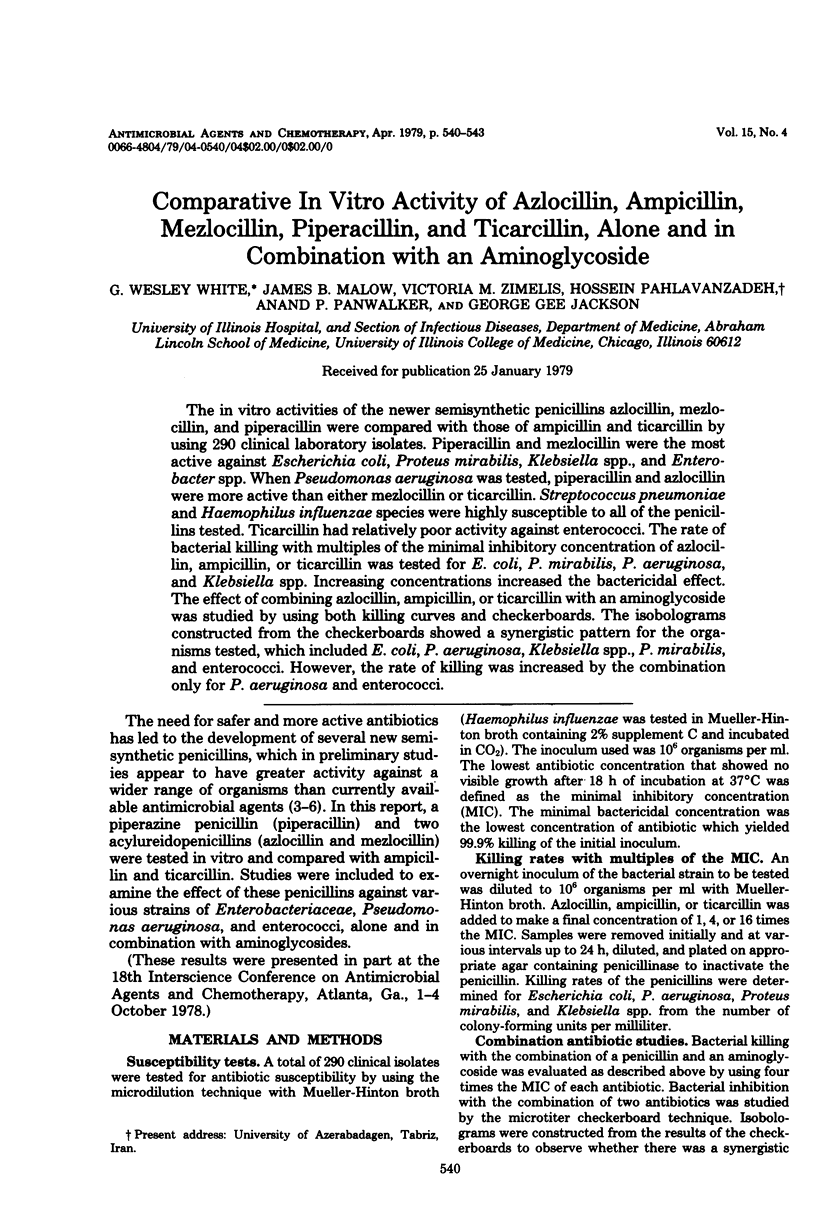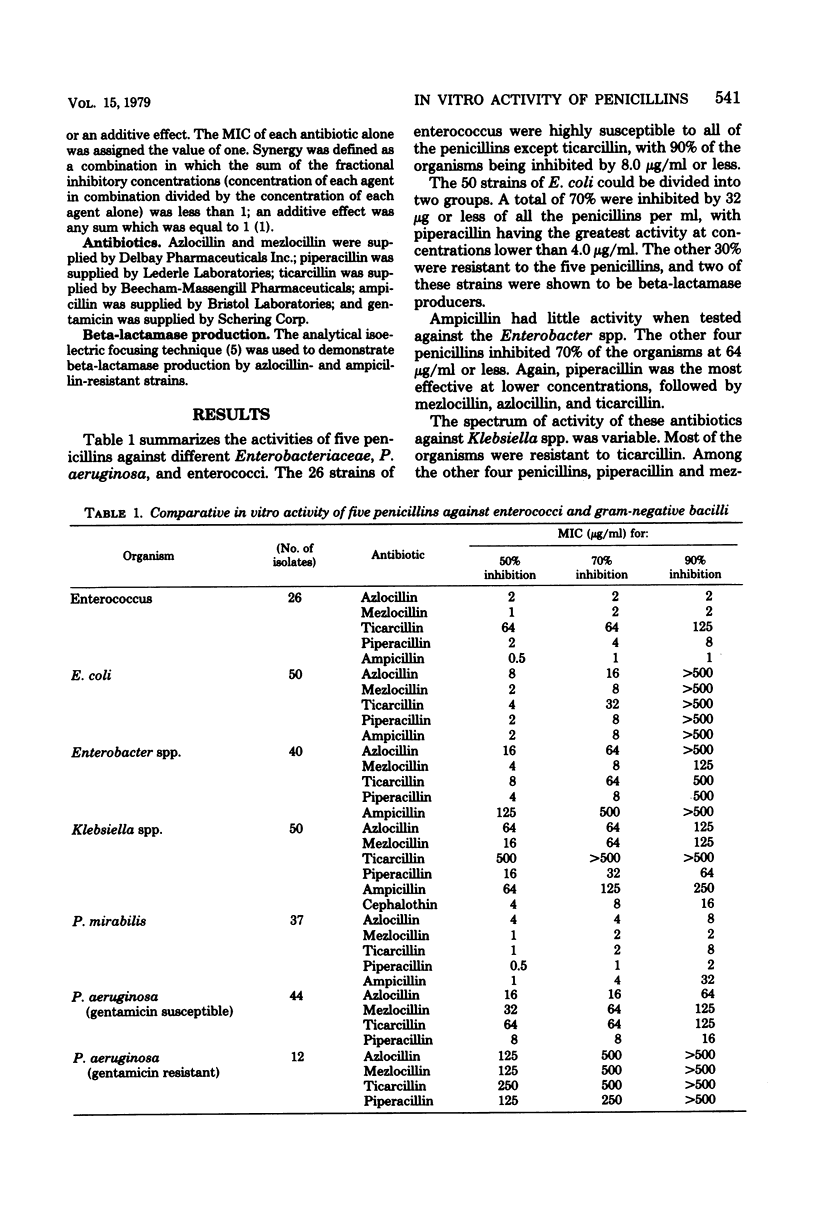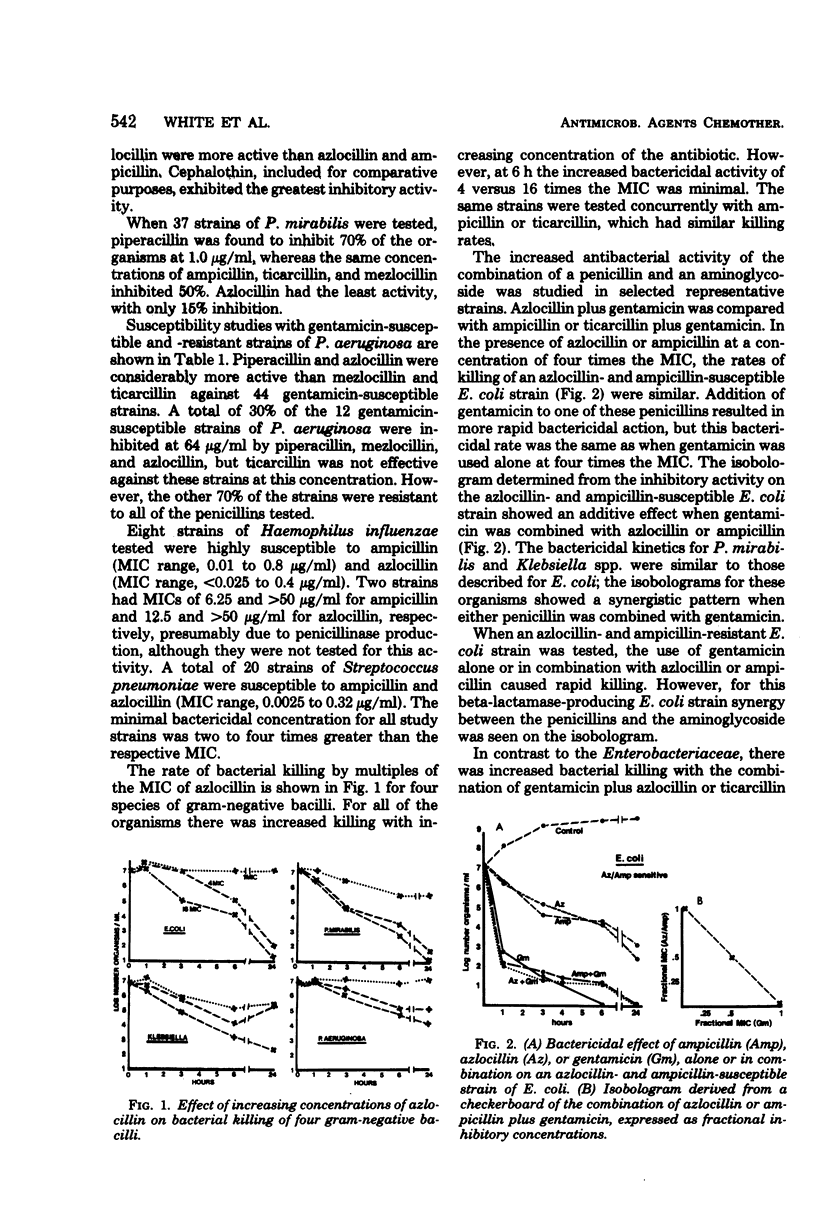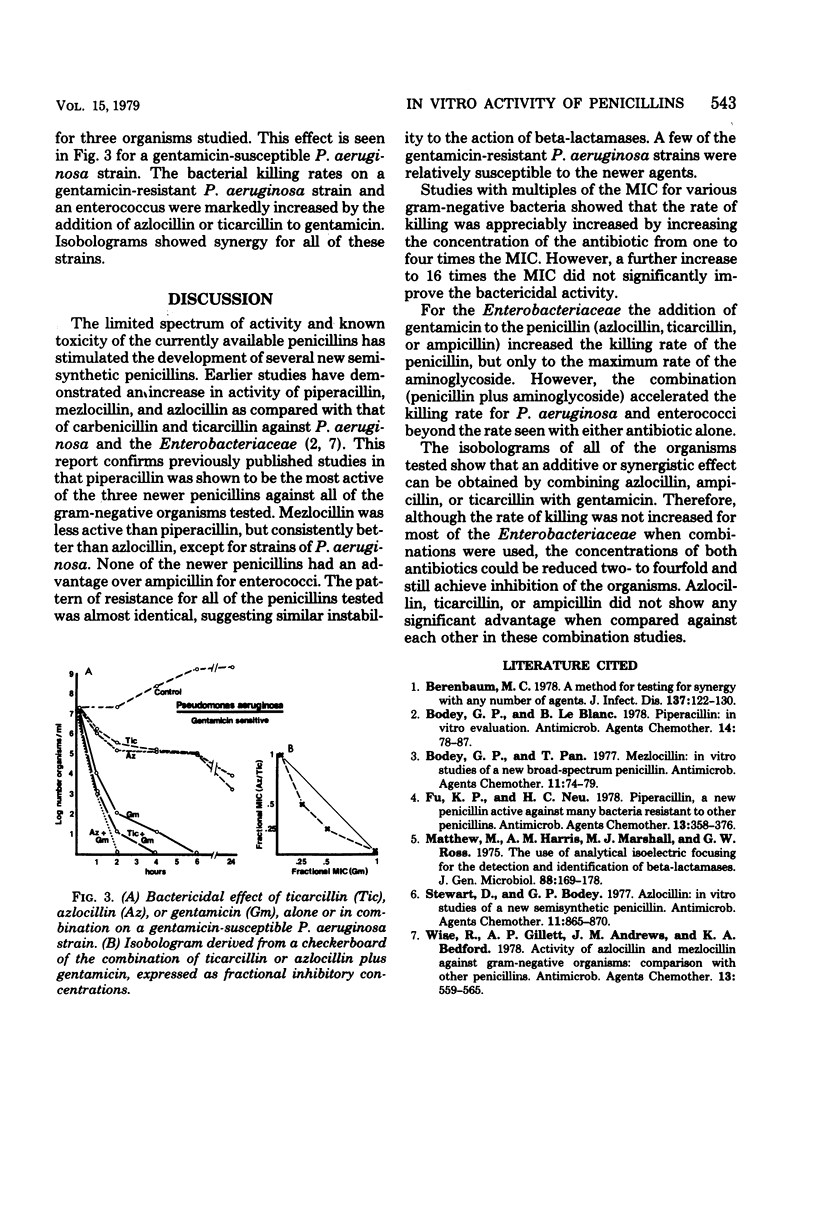Abstract
The in vitro activities of the newer semisynthetic penicillins azlocillin, mezlocillin, and piperacillin were compared with those of ampicillin and ticarcillin by using 290 clinical laboratory isolates. Piperacillin and mezlocillin were the most active against Escherichia coli, Proteus mirabilis, Klebsiella spp., and Enterobacter spp. When Pseudomonas aeruginosa was tested, piperacillin and azlocillin were more active than either mezlocillin or ticarcillin. Streptococcus pneumoniae and Haemophilus influenzae species were highly susceptible to all of the penicillins tested. Ticarcillin had relatively poor activity against enterococci. The rate of bacterial killing with multiples of the minimal inhibitory concentration of azlocillin, ampicillin, or ticarcillin was tested for E. coli, P. mirabilis, P. aeruginosa, and Klebsiella spp. Increasing concentrations increased the bactericidal effect. The effect of combining azlocillin, ampicillin, or ticarcillin with an aminoglycoside was studied by using both killing curves and checkerboards. The isobolograms constructed from the checkerboards showed a synergistic pattern for the organisms tested, which included E. coli, P. aeruginosa, Klebsiella spp., P. mirabilis, and enterococci. However, the rate of killing was increased by the combination only for P. aeruginosa and enterococci.
Full text
PDF



Selected References
These references are in PubMed. This may not be the complete list of references from this article.
- Berenbaum M. C. A method for testing for synergy with any number of agents. J Infect Dis. 1978 Feb;137(2):122–130. doi: 10.1093/infdis/137.2.122. [DOI] [PubMed] [Google Scholar]
- Bodey G. P., Le Blanc B. Piperacillin: in vitro evaluation. Antimicrob Agents Chemother. 1978 Jul;14(1):78–87. doi: 10.1128/aac.14.1.78. [DOI] [PMC free article] [PubMed] [Google Scholar]
- Bodey G. P., Pan T. Mezlocillin: in vitro studies of a new broad-spectrum penicillin. Antimicrob Agents Chemother. 1977 Jan;11(1):74–79. doi: 10.1128/aac.11.1.74. [DOI] [PMC free article] [PubMed] [Google Scholar]
- Fu K. P., Neu H. C. Piperacillin, a new penicillin active against many bacteria resistant to other penicillins. Antimicrob Agents Chemother. 1978 Mar;13(3):358–367. doi: 10.1128/aac.13.3.358. [DOI] [PMC free article] [PubMed] [Google Scholar]
- Mathew A., Harris A. M., Marshall M. J., Ross G. W. The use of analytical isoelectric focusing for detection and identification of beta-lactamases. J Gen Microbiol. 1975 May;88(1):169–178. doi: 10.1099/00221287-88-1-169. [DOI] [PubMed] [Google Scholar]
- Stewart D., Bodey G. P. Azlocillin: in vitro studies of a new semisynthetic penicillin. Antimicrob Agents Chemother. 1977 May;11(5):865–870. doi: 10.1128/aac.11.5.865. [DOI] [PMC free article] [PubMed] [Google Scholar]
- Wise R., Gillett A. P., Andrews J. M., Bedford K. A. Activity of azlocillin and mezlocillin against gram-negative organisms: comparison with other penicillins. Antimicrob Agents Chemother. 1978 Apr;13(4):559–565. doi: 10.1128/aac.13.4.559. [DOI] [PMC free article] [PubMed] [Google Scholar]


